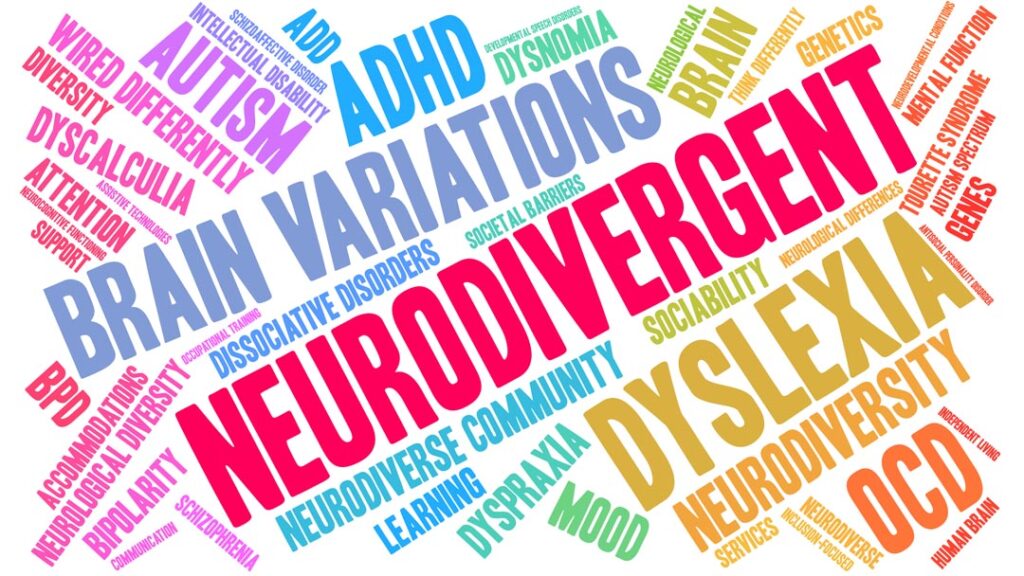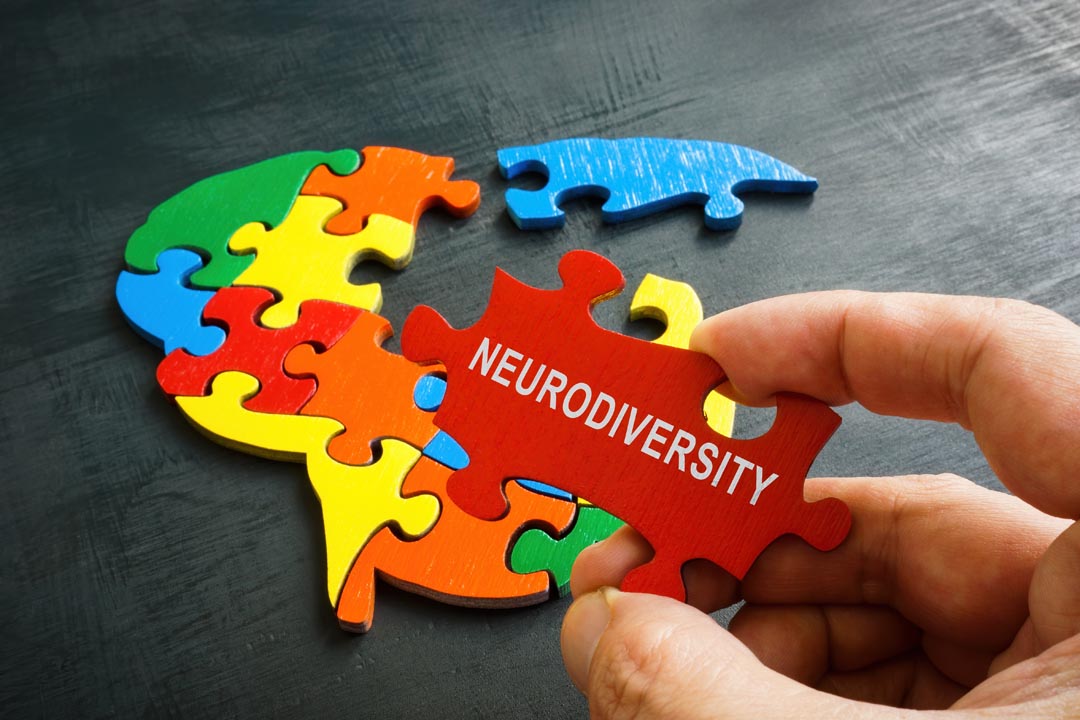Leanne Maskell highlights that we want a neurodiverse workforce and shares practical ideas for how to manage differences
Although 55% of organisations believe they have a neuroinclusive culture, research has shown the opposite. Only 37% of neurodivergent employees polled felt their employer offered meaningful support, and only 52% felt able to talk about neurodiversity at work. 1 in 5 have experienced harassment or discrimination at work.
We are all neurodiverse, as we all think differently from one another, so neuroinclusion isn’t just about people with specific conditions such as ADHD, but everybody
These statistics show the importance of employers thinking differently about people who think differently – neuroinclusion is not a checkbox to be ticked. A ‘one size fits all’ approach doesn’t work when neurodiversity is so uniquely individual.
Diversity advantages
The benefits to being neuro-inclusive are evident – it creates workplaces where everybody feels psychologically safe enough to bring their ‘whole selves’ to work, with neurodivergent people able to harness their out-of-the-box thinking to foster innovative and inclusive cultures for all.
However, neuro-inclusion is not just an option, it’s the law. Neurodevelopmental conditions like ADHD and Autism can be disabilities under the Equality Act 2010, triggering legal duties on employers to make reasonable adjustments which ‘level the playing field’ for everybody. Failure to make reasonable adjustments can amount to disability discrimination, for which there are potentially uncapped damages in the employment tribunal.
This can be confusing for employers to navigate on an individual level, but has become more important than ever before given the skyrocketing increase in neurodiversity awareness in recent years. As employees are discovering they are neurodivergent later in life, their employers are often on these journeys with them, whether they want to be or not.
Here’s how employers can create neuroinclusive workplaces that go beyond the minimum and embrace the opportunity of learning and optimising workplaces that work for everybody:
1) Establish policies and processes
Neuro-inclusivity can feel vulnerable for employers, as it necessitates tailored approaches and sensitive conversations. This can be especially so within fast-paced and highly pressured working environments, with little room for mistakes or differences.
Having neurodiversity policies in place systemises this vulnerability with a clear set of guidelines for everybody to follow, such as this free template. Explaining processes such as how reasonable adjustments are made enables everybody to have an objective understanding of what is and is not possible, which is especially important for neurodivergent people who may not know what this process involves.
By setting frameworks and structures in place, employers can establish psychological safety for everybody to feel safe disclosing their differences at work and creating the most effective working environment for them to perform.

Making reasonable adjustments doesn’t have to be difficult as the average cost is £75. Many adjustments are completely free, such as enabling flexible working times and/or locations. Enabling managers to be able to easily sign-off on these decisions without a bureaucratic paper trail or time delay is important to ensure support is accessible. A standard flexible working hours policy supports inclusion for all.
At the same time, it’s important to ensure that any requests for reasonable adjustments are treated as such, and not under ‘catch all’ policies such as working from home as different treatment may be required for disabled people to achieve equality.
2) Provide tailored neurodiversity training
Policies and processes are pointless if nobody knows they exist, so employers need to ensure everybody is on the same page. Employers must think inclusively about who needs what training when it comes to neurodiversity, as there are important factors in different contexts.
Neuroinclusivity is an ongoing culture shift, where employees recognise and support each other’s unique strengths and challenges, empowering and supporting each other as they are
For example, only a third of HR professionals have had any specific training in relation to neurodiversity. Specialist training relating to neuroinclusive recruitment and policies are imperative to ensuring indirect discrimination does not occur. A manager may also require specific neurodiversity training to most effectively manage an individual who has disclosed a particular condition, or to implement reasonable adjustments on an ongoing basis.
This may also be applicable organisation-wide, providing overall education on different aspects of neuroinclusivity, but it’s important for employers to remember that there are many unique neurodivergent conditions that cannot be comprehensively covered in one go. Neuroinclusivity is an ongoing culture shift, where employees recognise and support each other’s unique strengths and challenges, empowering and supporting each other as they are.
Employers could undertake more specialised skills training to facilitate this, such as with ADHD Champions, which trains employees in ADHD coaching skills and tools to provide actionable support and signposting for each other, with logos to demonstrate this.
Equally, individual training and support may be highly beneficial, such as by providing ADHD coaching. This can enable individuals with ADHD to learn strategies to support them in the workplace, which can be extremely helpful in light of the 30% developmental delay in executive functioning skills linked with ADHD.
Although it can feel complex to figure out which kind of training may be most appropriate for specific circumstances, employers can ring-fence budgets, and identify additional funding opportunities and resources, signposting people towards them. For example, Access to Work is a UK Government scheme funding up to £66,000 worth of support for anyone with any health condition impacting them at work, involving an assessment and individualised recommendations such as disability awareness training for specific employees and/or workplace strategy coaching. Supporting employees navigating this process can be extremely helpful, including helping them with the administration involved.
3) Share best practice
Neuroinclusivity is not one action, but is a continuous and ongoing process made up of endless unique experiences. Employers have a brilliant opportunity to centralise these experiences and knowledge in one place, such as by incorporating neurodiversity support into a specific job role or creating a neurodiversity hub on an intranet.
What helps one individual can also help others, even if it’s simply to provide an understanding of the potential benefits of disclosing a neurodivergent condition at work. Supporting employees to share their experiences (if they feel comfortable doing so) can also be very empowering for them to be able to help others within the organisation as role models. This could be in the form of blog posts, interviews, or employee network groups, for example. It’s important for employers to properly recognise these contributions, such as by adjusting workload!

Employers can facilitate brainstorming and ideas sharing as to how to support neuroinclusive cultures – neurodivergent people tend to be very good at thinking outside of the box by definition! Each organisation will be unique and there may be excellent ideas as to how things can improve for everybody, such as adapting working requirements or providing interview questions in advance, for example. Inviting and listening to feedback ensures that everybody’s thoughts are valued.
Free up the energy
Supporting people with ADHD effectively at work means that we have the same opportunities as our peers to contribute all our efforts to our job, instead of wasting energy masking who we are. We are all neurodiverse, as we all think differently from one another, so neuroinclusion isn’t just about people with specific conditions such as ADHD, but everybody.
When employers make the effort to understand and support the differences within their workforce, psychological safety is fostered throughout the organisation, empowering everybody to work in the ways that work best for them.
Leanne Maskell is an ADHD Coach, Director of ADHD Works and author of ADHD Works at Work and ADHD an A-Z.




